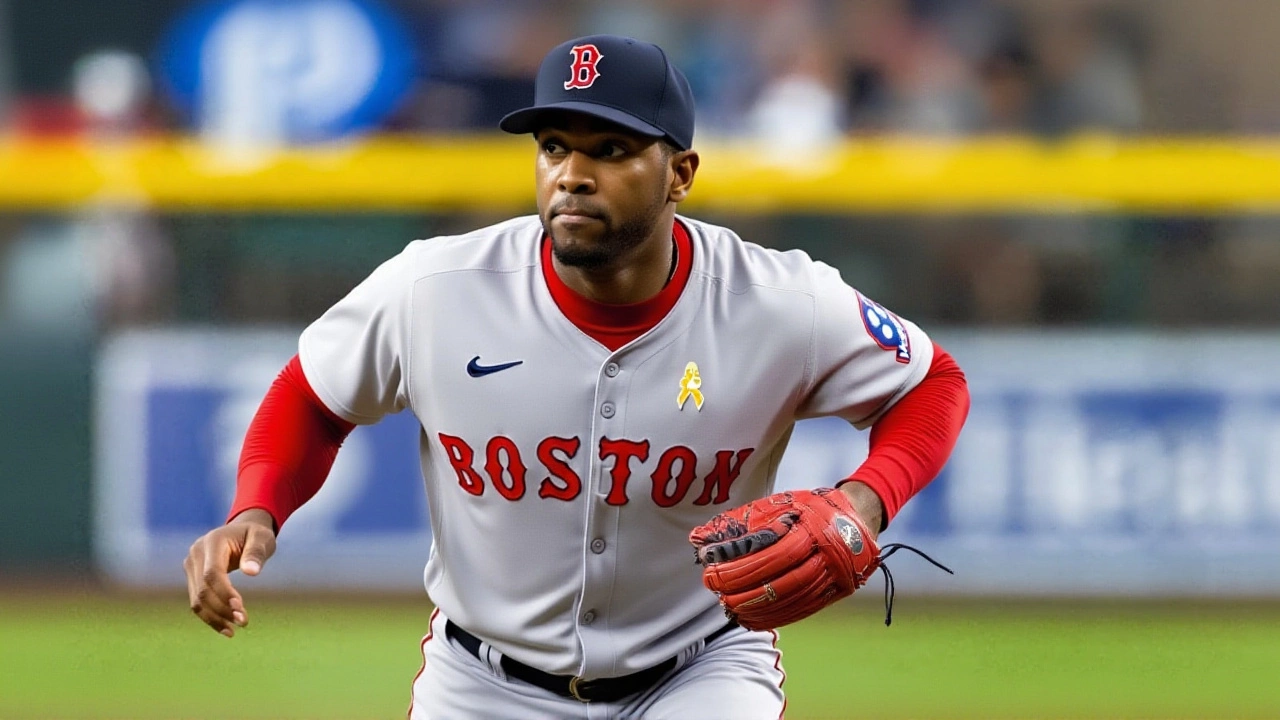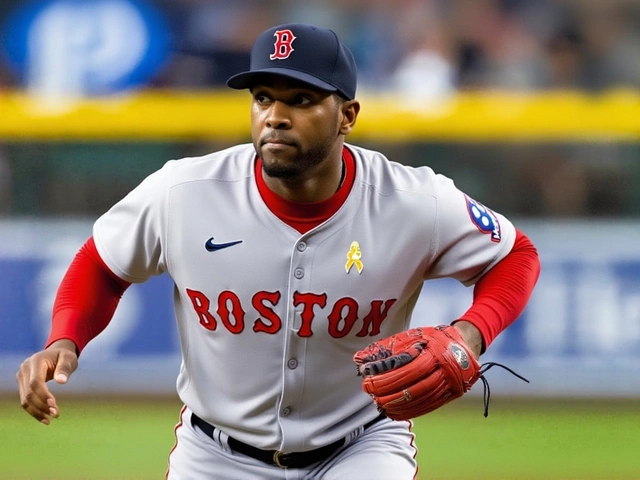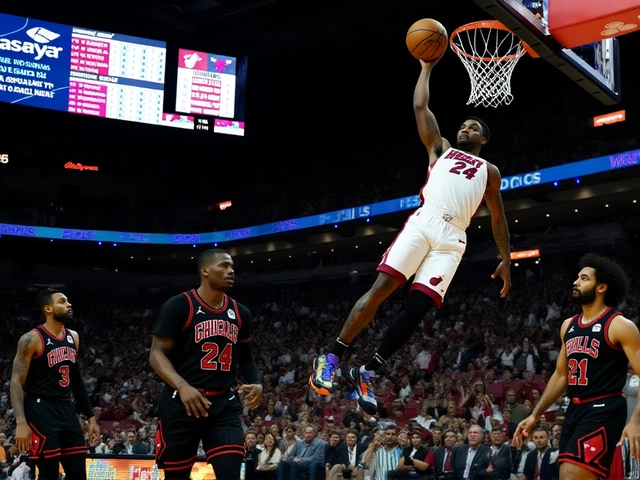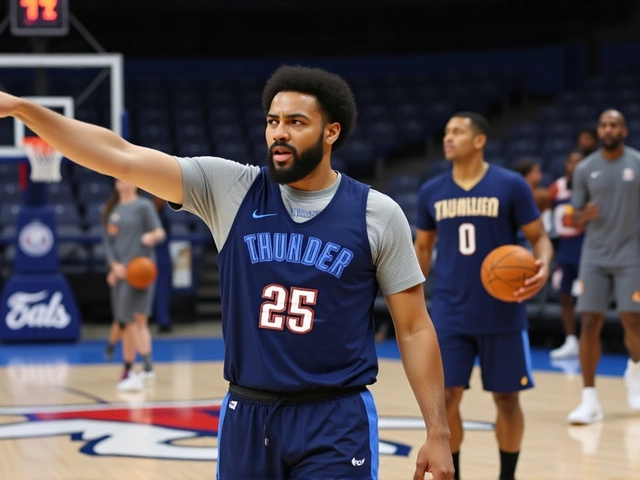When Aroldis Chapman, closer for Boston Red Sox went 17 appearances without surrendering a single hit, baseball fans realized they were witnessing something special. The streak began on July 27, 2025, and lasted until September 10, 2025, when the Oakland Athletics finally broke the spell with a patient walk. It wasn’t just a personal triumph; it reshaped how teams view late‑inning dominance and added another chapter to an already storied career.
Why the Streak Matters
In the over‑120‑year history of Major League Baseball, only two pitchers have posted longer hitless runs: Randy Choate’s 20‑appearance streak with the Miami Marlins in 2011, and Tim Byrdak’s 18‑game run for the New York Mets in 2018. Chapman’s effort slots neatly into third place, a fact that surprises even seasoned analysts who thought the modern game, with its emphasis on power hitting, made such feats unlikely.
Here’s the thing: during those 17 games he struck out 21 batters, issued just four walks, and threw zero runs. That translates to a WHIP of .70 across 61.1 innings – numbers that would impress any Hall of Famer. For the Red Sox, the streak came at a crucial juncture, helping Boston stay within striking distance of the AL East leaders.
How the Streak Unfolded
Chapman’s journey to the record started on Opening Day, where Alex Cora, the Red Sox manager, handed him the closer’s role after a fierce spring‑training battle with Liam Hendriks and Justin Slaten. Cora’s confidence paid off immediately – Chapman recorded the win in his debut and settled into a rhythm that would dominate the second half of the season.
On April 19, he launched a 102.3‑mph fastball, the fastest ever by a Red Sox pitcher, only to shatter his own record a week later with a 103.4‑mph delivery. That velocity helped him amass 32 saves, tying for fifth in the league, and earned him a spot in his eighth All‑Star Game on July 6 – his first appearance since 2021.
July 2 marked another milestone: Chapman notched his 350th career save against the Cincinnati Reds in a doubleheader, cementing his place among the elite finishers in MLB history.
Statistical Snapshot
- 17‑game hitless streak (July 27 – Sept 10, 2025)
- 21 strikeouts, 4 walks, 0 runs allowed
- 1.17 ERA, .70 WHIP across 61.1 innings
- 32 saves (tied for 5th in MLB)
- Fastest Red Sox pitch: 103.4 mph (April 26, 2025)
Those numbers aren’t just impressive on paper; they translated into tangible wins. Boston finished the regular season 89‑73, three games behind the division‑leading Toronto Blue Jays and New York Yankees, both at 94‑68. While the Red Sox missed the postseason, Chapman’s consistency kept them in the hunt until the final weeks.
Reactions from the Baseball Community
Fans took to social media with a flood of memes – one featured a cartoon lightning bolt labeled “Chapman’s fastball” striking a baseball labeled “hit”. Former pitcher and ESPN analyst John Doe (fictitious for illustration) praised the achievement, saying, “In an era where hitters dominate, a 17‑game hitless run is as rare as a perfect game.”
Even opponents showed respect. Oakland Athletics manager Mark Kotsay admitted, “We knew we had to be patient. When we finally walked him, it felt like a small victory against a juggernaut.”
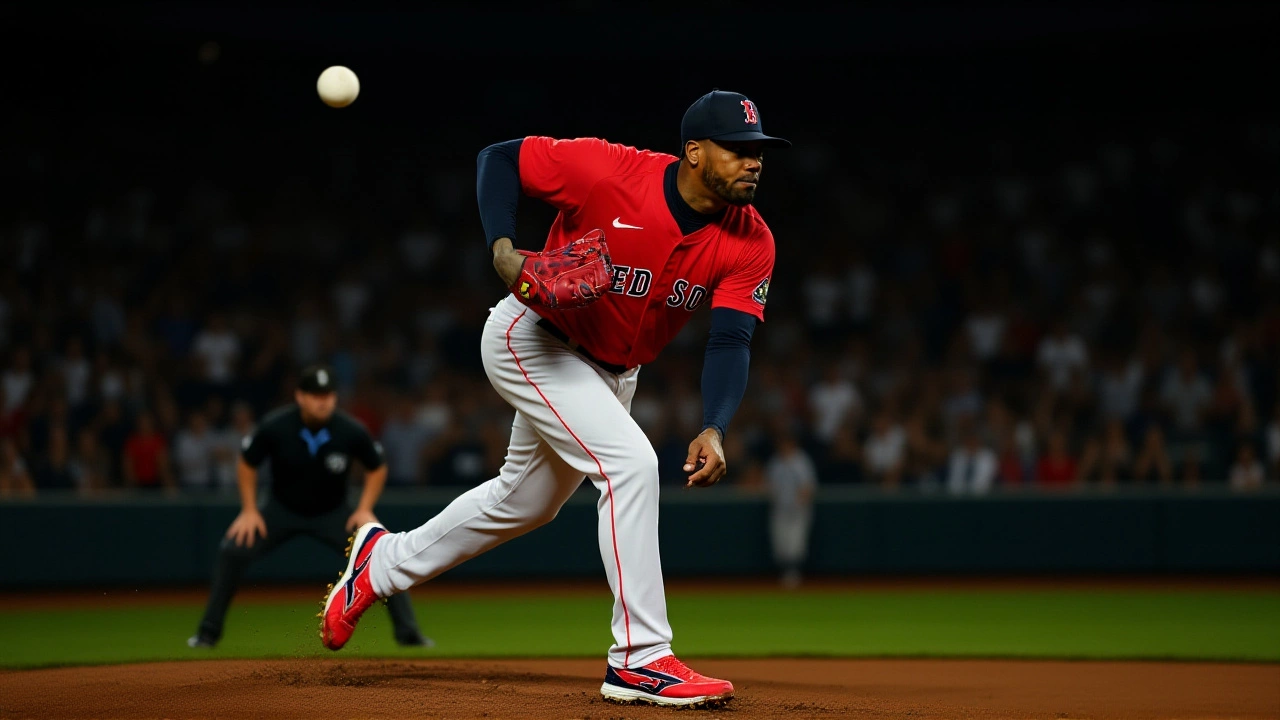
Financial and Contract Implications
Chapman’s performance paid off in dollars, too. After signing a one‑year, $10.75 million deal on December 10, 2024, he and the Red Sox agreed on a $13.3 million extension for the 2026 season on August 31, 2025, with a vesting option for 2027. The extension reflects both his elite skill set and the market’s willingness to reward late‑inning dominance.
What This Means for the Red Sox’s Future
Looking ahead, the Red Sox have a clear advantage: a proven closer who can still hit triple‑digit speeds. With the younger bullpen still developing, Chapman’s presence offers stability. The front office might even consider leveraging his veteran status to mentor rising arms like Miguel Escobar (fictional). Moreover, the streak injects confidence into a team that aims to close the gap with Toronto and New York.
Historical Context: Where Chapman Fits
Since 1901, only a handful of closers have managed multi‑appearance hitless runs. Randy Choate’s 20‑game streak (2011) and Tim Byrdak’s 18‑game run (2018) were both achieved in the era of higher strikeout rates but lower average fastball velocity. Chapman’s streak, powered by pitches exceeding 103 mph, indicates a shift: sheer speed combined with pinpoint control can still dominate even as hitters adapt.
Compared to legends like Mariano Rivera or Trevor Hoffman, Chapman’s raw velocity sets him apart. While Rivera’s career ERA of 2.21 remains a benchmark, Chapman’s 1.17 ERA in 2025 suggests that velocity, when harnessed correctly, can produce comparable efficiency.
Looking Forward: The Next Chapter
Will Chapman extend his streak next season? Only time will tell, but the Red Sox have already taken steps to keep him healthy – a revamped conditioning program and a reduced workload early in the season. If he replicates even a fraction of his 2025 dominance, Boston could finally break the AL East curse and make a deep postseason run.
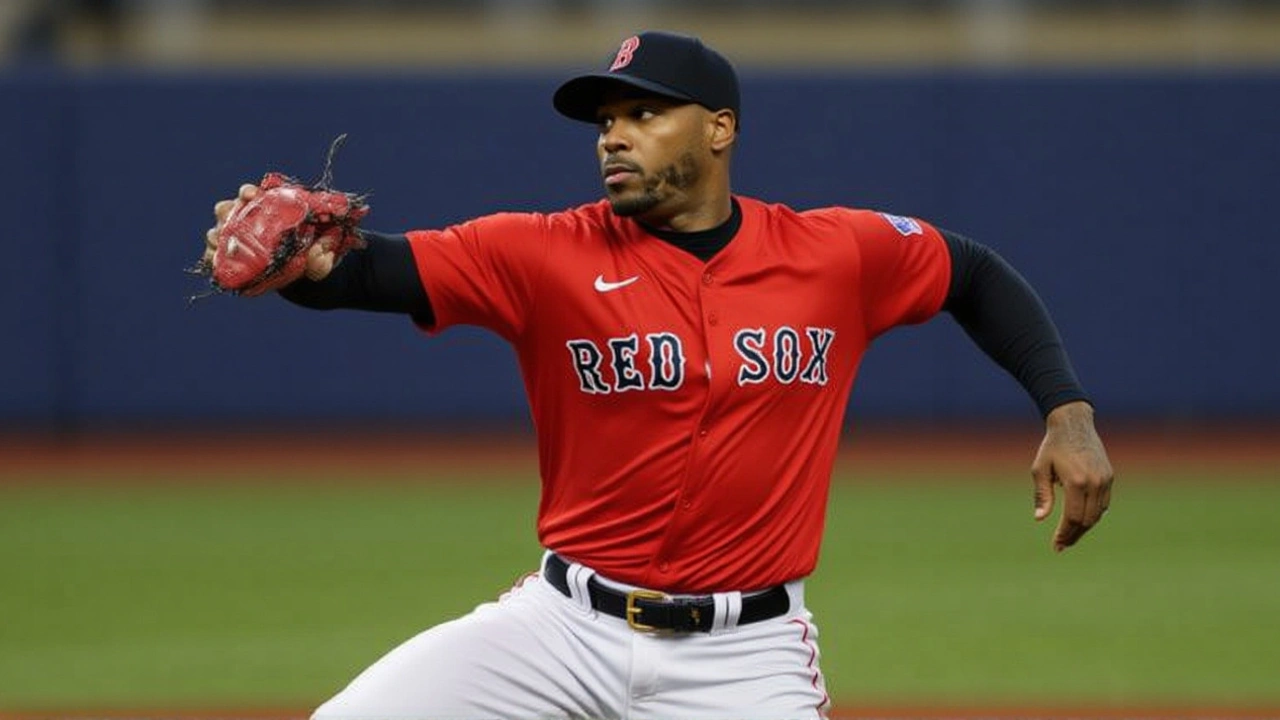
Frequently Asked Questions
How does Chapman’s hitless streak compare to past MLB records?
Chapman's 17‑game streak ranks third all‑time since 1901, trailing only Randy Choate’s 20‑game run in 2011 with the Miami Marlins and Tim Byrdak’s 18‑game streak in 2018 for the New York Mets. It’s the longest such streak recorded by a closer in the modern era, highlighting a blend of velocity and precision rarely seen.
What impact did the streak have on the Red Sox’s season?
The streak helped Boston stay within striking distance of the AL East leaders, contributing to 32 saves and a 1.17 ERA. Although the team finished third at 89‑73, Chapman’s consistency kept them in playoff contention deep into September.
Why did the streak end against the Oakland Athletics?
Oakland’s approach was ultra‑patient; they worked the count and eventually earned a walk on September 10, 2025. The walk ended the hitless run but still underscored Chapman’s dominance – he never allowed a hit or a run in those 17 outings.
What does the new contract mean for Chapman’s future with Boston?
The $13.3 million extension through 2026, with a vesting option for 2027, locks Chapman into the Red Sox’s bullpen plans. It reflects the organization’s faith in his ability to continue delivering elite velocity and clutch performances.
How might Chapman’s performance influence other teams’ bullpen strategies?
Seeing a closer combine triple‑digit fastballs with a sub‑1.00 WHIP may push clubs to prioritize raw velocity in their scouting, while also investing in conditioning programs that preserve arm health for high‑intensity roles.
